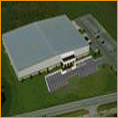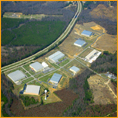We have been in the industrial building business a long time. Unlike most of the other developers in the industrial sector, we build only for ourselves and hold the buildings long term. We build them like we are going to own them, because we do! Over 35 years of building and owning buildings, you learn you what lasts and what is a constant maintenance headache.
One area we have always focused on is the roof. A good industrial building has to have a good floor and a good roof, or it isn’t worth much. We have been long-time advocates for standing seam Galvalume roofing. It is very economical initially and saves weight and money. The material is guaranteed for 25 years and often lasts more than 30 years giving good service.
When you hold on to buildings for the long term as a core part of your business, you eventually run past the 30-year life of a Galvalume standing seam roof. You can remove it and replace it as if you were installing a new roof. However, this is labor intensive to double handle the roofing sheets. It would be good for another 30 years and make it literally like new, but what do you do when you have an operating business in the building with millions of dollars of equipment that needs to continue to run day and night?
It depends a bit on the capacity of your structure to carry additional weight, but you can actually leave the original roof in place and add another roof over it. This results in a brand-new roof and the best part is that the operating company in the building below never knows it is happening, and they can operate in their normal mode without disruption.
We have approached the roof-over-roof a couple of ways. If we have the additional structural capacity to accept 3 more PSF of roof loading, the best long-term solution is to go metal over metal and put a new layer of standing seam Galvalume roofing over the original roof. This gets you another 30 years of roof life for the building.
If you are limited in the amount of additional weight the structure can carry (because the tenant is hanging many pipes and other items from the roof for instance), a second method is to fill the standing seam flutes with rigid insulation and cover with a TPO roof membrane. This solution is fast and inexpensive but has a more limited service life of 20 years.
The most important consideration is keeping the tenant operational. We work hard to understand our customer’s business and do what we can to keep them going, because they keep us going!



